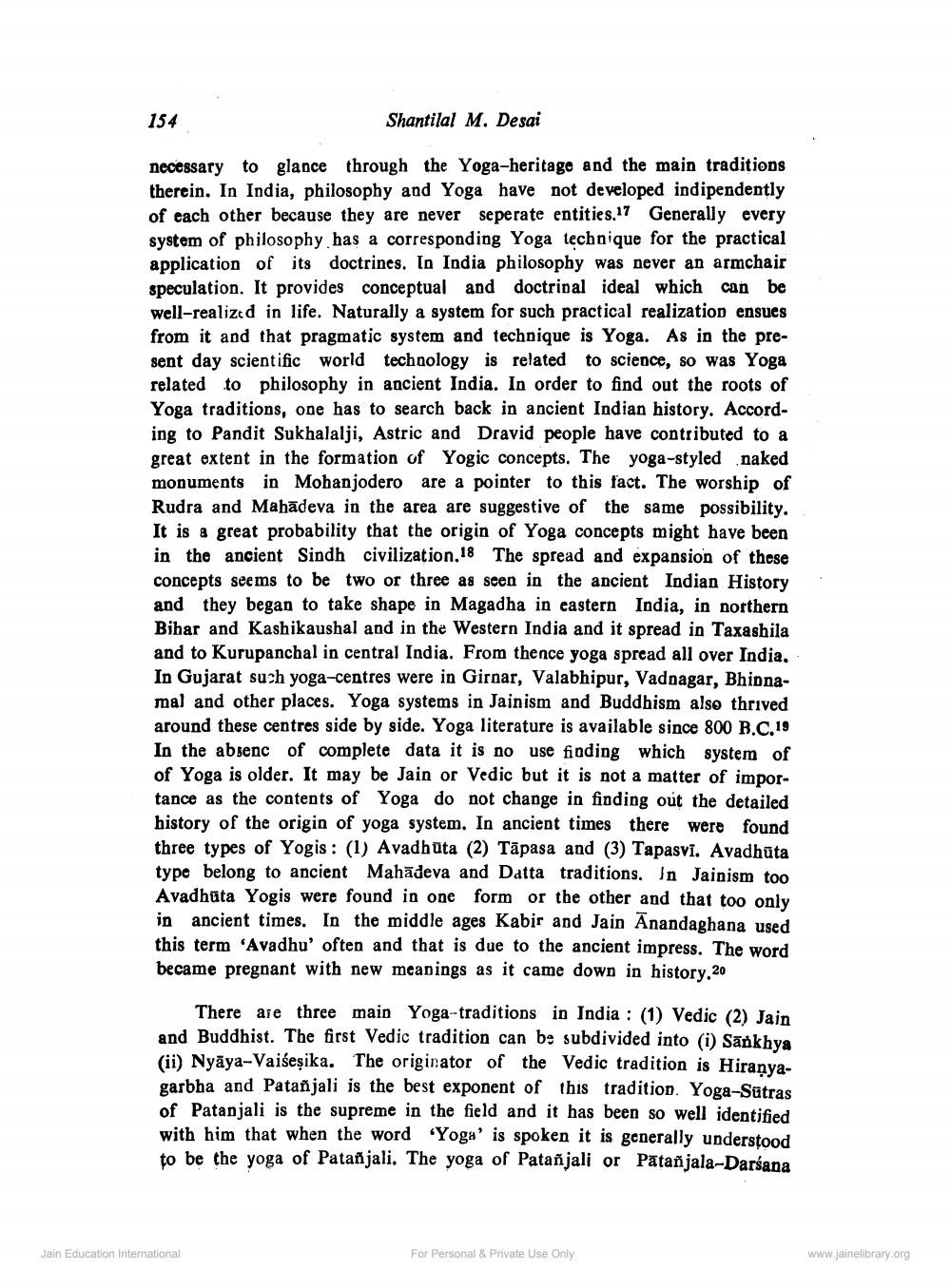________________
154
Shantilal M. Desai
necessary to glance through the Yoga-heritage and the main traditions therein. In India, philosophy and Yoga have not developed indipendently of each other because they are never seperate entities.17 Generally every system of philosophy has a corresponding Yoga technique for the practical application of its doctrines. In India philosophy was never an armchair speculation. It provides conceptual and doctrinal ideal which can be well-realized in life. Naturally a system for such practical realization ensues from it and that pragmatic system and technique is Yoga. As in the present day scientific world technology is related to science, so was Yoga related to philosophy in ancient India. In order to find out the roots of Yoga traditions, one has to search back in ancient Indian history. According to Pandit Sukhalalji, Astric and Dravid people have contributed to a great extent in the formation of Yogic concepts. The yoga-styled naked monuments in Mohanjodero are a pointer to this fact. The worship of Rudra and Mahadeva in the area are suggestive of the same possibility. It is a great probability that the origin of Yoga concepts might have been in the ancient Sindh civilization.18 The spread and expansion of these concepts seems to be two or three as seen in the ancient Indian History and they began to take shape in Magadha in eastern India, in northern Bihar and Kashikaushal and in the Western India and it spread in Taxashila and to Kurupanchal in central India. From thence yoga spread all over India, In Gujarat such yoga-centres were in Girnar, Valabhipur, Vadnagar, Bhinnamal and other places. Yoga systems in Jainism and Buddhism also thrived around these centres side by side. Yoga literature is available since 800 B.C.19 In the absenc of complete data it is no use finding which system of of Yoga is older. It may be Jain or Vedic but it is not a matter of importance as the contents of Yoga do not change in finding out the detailed history of the origin of yoga system. In ancient times there were found three types of Yogis : (1) Avadhuta (2) Tāpasa and (3) Tapasvi. Avadhūta type belong to ancient Mahadeva and Datta traditions. In Jainism too Avadhuta Yogis were found in one form or the other and that too only in ancient times. In the middle ages Kabir and Jain Anandaghana used this term 'Avadhu' often and that is due to the ancient impress. The word became pregnant with new meanings as it came down in history,20
There are three main Yoga--traditions in India : (1) Vedic (2) Jain and Buddhist. The first Vedic tradition can be subdivided into (i) Sankhya (ii) Nyāya-Vaišeşika. The originator of the Vedic tradition is Hiranyagarbha and Patanjali is the best exponent of this tradition. Yoga-Sutras of Patanjali is the supreme in the field and it has been so well identified with him that when the word "Yoga' is spoken it is generally understood to be the yoga of Patanjali. The yoga of Patañjali or Patañjala-Darsana
Jain Education International
For Personal & Private Use Only
www.jainelibrary.org




